The waterfalls in Northern California offer a stunning display of natural beauty, featuring some of the most renowned and breathtaking cascades found in the United States.
Although it might seem like the waterfalls in Northern California have leaped straight from the pages of a fairy tale, we can’t assure you that you’ll encounter any enchanting fairies or mythical unicorns during your journey. What we can guarantee, however, is an adventure that will be thoroughly rewarding.
From the serene murmur of gently flowing waters to the powerful sounds of waterfalls plunging into stony basins, we’re excited to guide you through the crème de la crème of these natural wonders, equipped with all the necessary details for your exploration. As seasoned aficionados of waterfall hunting, rest assured, you’re in capable hands.
Top 25 Waterfalls in Northern California
Northern California is home to some of the most breathtaking waterfalls in the United States, each offering unique experiences for nature enthusiasts and hikers. Here’s a closer look at the top 25 waterfalls in Northern California with region, including location details, visiting tips, and what makes each of them stand out.
Whiskeytown Falls
Previously concealed within the Whiskeytown National Recreation Area, Whiskeytown Falls was a secluded marvel for around four decades, hidden from the general public. The narrative suggests that after the National Park Service assumed control in 1964, the falls were deliberately left off survey maps by rangers and other staff, keeping its existence a well-guarded secret until it was eventually disclosed.
The journey to discover Whiskeytown Falls starts from the James K Carr Trailhead. Remember to pack insect repellent, as bugs can be quite bothersome. The path initially descends, accompanied by the serene sounds of Crystal Creek, and after a bridge crossing, it begins its ascent. Resting spots with benches are available along the path for moments of relaxation.
McCloud Falls
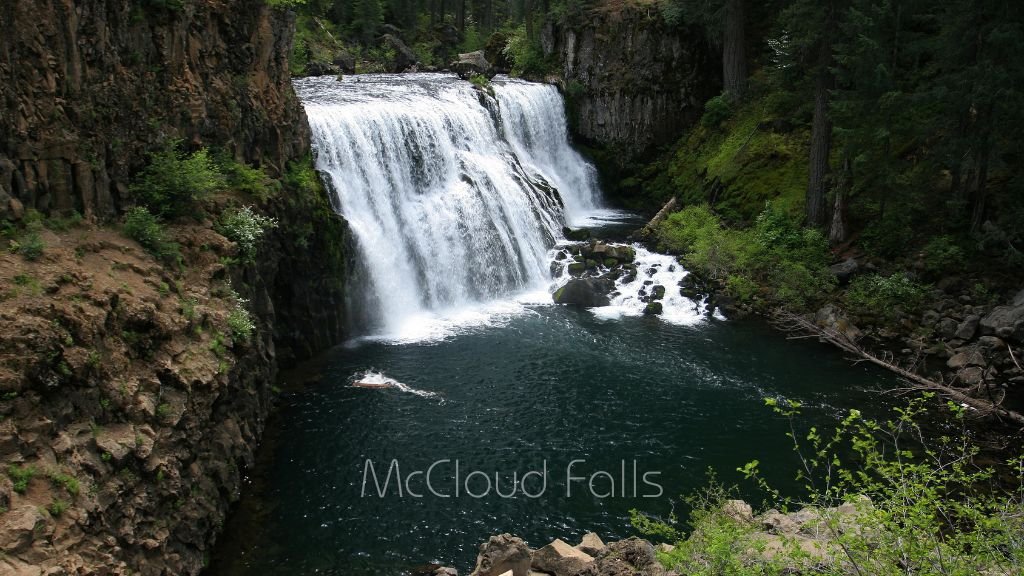
Positioned within the Mount Shasta area, McCloud Falls is accessible less than 20 miles from Mt. Shasta city, conveniently visited from Interstate 5. Comprising three distinct cascades connected by a manageable four-mile round-trip hike, these falls are a highlight of the region. In summer, the pools beneath the waterfalls become popular swimming spots.
Previously, jumping from the 15-foot lower falls was a common activity, which has since been strongly advised against due to the presence of large rocks beneath the surface, posing a serious risk. The Middle McCloud Falls, standing at 50 feet tall and extending 100 feet wide, is particularly striking. The Upper Falls, though smaller at 30 feet in height, offers its own charm and tends to be less crowded, making it an ideal spot for a quieter swim.
The optimal times for visiting these falls include summer for swimming enthusiasts, despite potential crowds. Spring and fall offer a more serene experience with fewer visitors, and while winter visits are possible, they are dependent on snow conditions.
Crystal Creek Falls
An idyllic retreat for bird watchers and nature lovers, Crystal Creek Falls presents an opportunity to immerse oneself in the tranquility of nature. The effects of the 2018 Carr Fire are noticeable in this area, with potential hazards such as unstable trees, loose stones, and charred tree stumps. It is advisable to proceed with caution, especially during adverse weather conditions that might trigger flash floods or landslides.
The adventure to Crystal Creek Falls begins on an even, paved path from the access gate, leading to a scenic picnic and barbecue spot after about a third of a mile. The journey culminates at the enchanting two-tiered Crystal Creek Falls, easily viewed from the paved area. For those wishing to get closer, an unofficial dirt trail leads to the waterfall’s base, offering a chance to experience the cool waters up close. For adventurers seeking more, a short scramble up the trail reveals the upper falls, providing an extended exploration of this picturesque locale.
Read More: Green Valley Falls
Feather Falls
Previously considered “the sixth tallest waterfall in the United States” at 640 feet, Feather Falls has been more accurately measured at 410 feet. Despite this, its stature over 400 feet still ranks it as an impressive sight and among the top waterfalls in Northern California, located near Lake Oroville in the Plumas National Forest.
Tragically, the vicinity of Feather Falls was severely affected by the North Complex fire in 2020. The California Wilderness Coalition reports the fire consumed 318,935 acres, destroyed 2,352 structures, decimated the communities of Berry Creek and Feather Falls, and resulted in at least 15 fatalities.
Prior to the fire, access to Feather Falls was provided by an 8-mile loop trail, which is expected to be closed for some years for cleanup, repair of fire-damaged sections, and reconstruction of the viewing platform. It’s recommended to postpone visits to Feather Falls until the trail reopens, offering a chance to see the forest in recovery.
Burney Falls
Nestled in the stunning McArthur-Burney Falls Memorial State Park in Shasta County, California, Burney Falls boasts a height of 129 feet and a width of 250 feet. This waterfall is acclaimed as one of the most beautiful in California, known for its year-round flow, which is fed by underground springs. Named after the early settler Scot Samuel Burney, the waterfall is a blend of natural splendor and historical significance.
President Teddy Roosevelt once proclaimed Burney Falls the “8th wonder of the world,” and it was recognized as a National Natural Landmark by the U.S. National Park Service in 1984. Beyond its breathtaking appearance, Burney Falls is remarkable for its consistent flow, even during dry spells, dispensing around 100 million gallons of water daily. Observers can see water emerging as if from nowhere, draping over moss-covered rocks like a curtain.
Visitors can approach the base to experience the waterfall’s formidable presence, characterized by its deafening roar that drowns out all other sounds. Burney Falls stands as one of the most visited and celebrated waterfalls in Northern California and the Mount Shasta area.
Nevada Falls
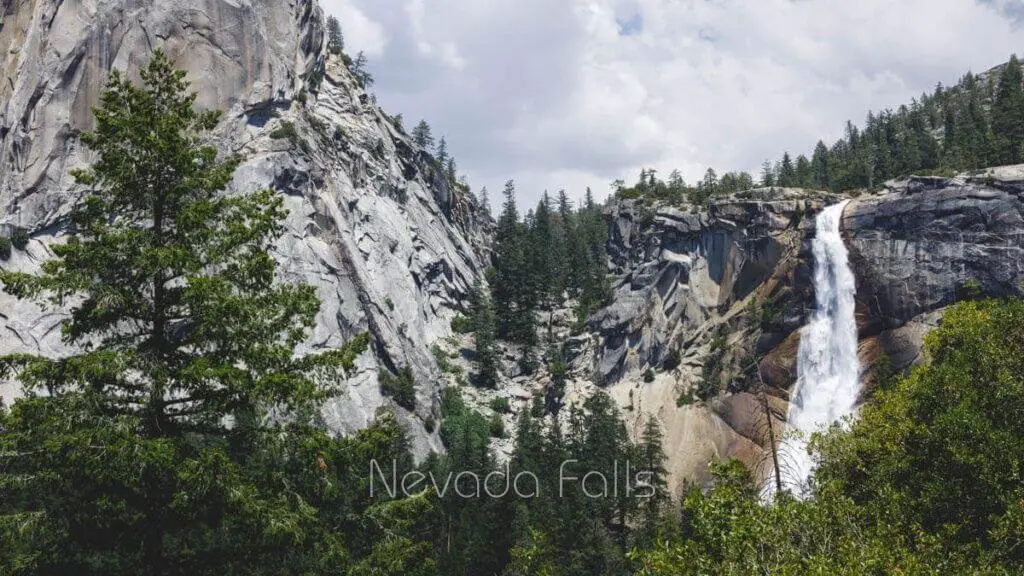
Embark from the Happy Isles Trailhead in the eastern Yosemite Valley to encounter the magnificent Vernal and Nevada Falls. After completing the trek to Vernal Falls and desiring further adventure, continuing the hike rewards you with another of Northern California’s stunning waterfalls.
The journey via the John Muir and Mist Trails provides intimate views of these formidable waterfalls, picturesque scenes along the Merced River, and sweeping vistas of Yosemite Valley.
Following the ascent from Vernal Falls, the path leads to Nevada Falls via the Mist Trail, passing landmarks like Emerald Pool and Silver Apron (where swimming is discouraged due to strong currents).
The ascent includes steep switchbacks for 1.5 miles to reach Nevada Fall, which plummets 594 feet, presenting extraordinary opportunities for photography. A footbridge at the summit offers an up-close perspective.
For the return trip, hikers can either backtrack on the Mist Trail or take the John Muir Trail for varied landscapes and views of Liberty Cap, providing a less congested path and distinct vistas. This route is celebrated as one of the best in Yosemite National Park, showcasing two waterfalls in a single hike.
Read Also: Shoshone Falls
Mosbrae Falls
Mosbrae Falls, located in the Dunsmuir area of the Mount Shasta region, is a must-visit for waterfall enthusiasts in Northern California. This picturesque waterfall cascades from a moss-laden cliff directly into the Sacramento River, creating a stunning display of nature’s elegance.
However, reaching Mosbrae Falls presents a challenge, as access requires walking along active train tracks, which is considered trespassing on private property. Despite the popularity of this route, it poses safety risks, including a past incident where an individual was struck by a train. Detailed information about safely navigating to Mosbrae Falls highlights the importance of caution and awareness of the risks involved.
Efforts are underway by the city of Dunsmuir and the Mount Shasta Trail Association to establish a legitimate trail connecting Hedge Creek Falls to Mosbrae Falls. While progress is being made, the project is still navigating through bureaucratic hurdles.
The journey begins with a 0.6-mile round trip to Hedge Creek Falls, located near the Sacramento River. Although smaller and with variable water flow, the trail beyond Hedge Creek Falls offers a river crossing and leads directly to the breathtaking Mosbrae Falls.
Potem Falls
For those seeking more adventures in the Shasta region, Potem Falls is a remarkable 70-foot waterfall that plunges into the Pit River, eventually flowing into Lake Shasta. Nestled in a deep canyon, the waterfall’s base features an inviting swimming hole, complete with a rope swing for added enjoyment.
Access to this secluded waterfall is relatively straightforward, with a 0.4-mile hike that may include narrow and slippery sections near the end. The journey to the trailhead involves a 10-mile drive on a well-maintained dirt road.
Potem Falls is accessible year-round, weather permitting, but summer visits are particularly recommended for those looking to swim in the refreshing waters at the waterfall’s base.
Eagle Falls and Lake Trail
The Eagle Falls Trail offers an unparalleled opportunity to explore some of Lake Tahoe’s most stunning natural features. This trail, located in the Emerald Bay area, combines waterfalls, creeks, lakes, granite peaks, and lush greenery into a memorable outdoor adventure.
While navigating rocky terrain and steep stone staircases, hikers are rewarded with the sight of Eagle Falls early on the trail. A bridge crossing provides a close-up view of the falls, with an option to continue to Eagle Lake for those seeking further exploration.
The trail to Eagle Lake involves a moderate ascent, leading to a fork where the right path takes visitors to the lake’s edge. Here, the cold waters of Eagle Lake invite a refreshing swim or simply a peaceful moment to enjoy the surrounding landscape.
Also Read: Skyline Loop Trail
Yosemite Falls
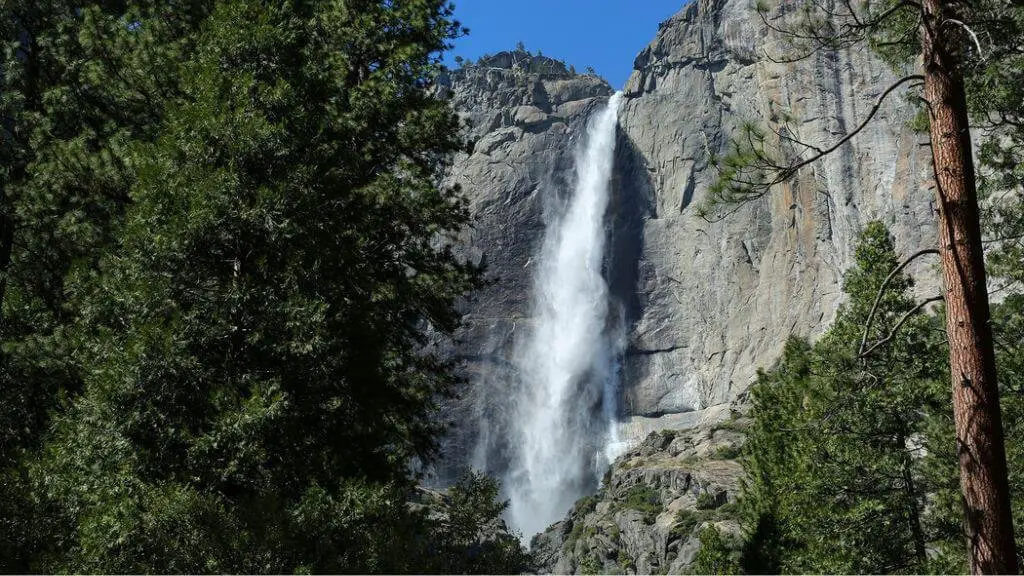
Yosemite Falls recognized as one of the highest waterfalls in the world, consists of three distinct sections: Upper Yosemite Fall at 1,430 feet, the middle cascades at 675 feet, and Lower Yosemite Fall at 320 feet. Various viewpoints around Yosemite Valley offer spectacular views of the falls, particularly near Yosemite Village and Yosemite Valley Lodge.
The trek to Upper Yosemite Falls is challenging, requiring a 7.2-mile round-trip hike with a climb of 2,700 feet. For those looking for a less strenuous option, Lower Yosemite Falls is accessible via a 1-mile round trip walk with minimal elevation gain. Regardless of which section you visit, the experience is sure to be memorable.
Grizzly Falls
Nestled in the Trinity Alps Wilderness, Grizzly Falls is a breathtaking 600-foot waterfall that demands effort to reach. Adventurers ready to embark on a 14-mile round trip hike, ascending 5,400 feet, will be rewarded with the sight of this remote marvel.
Originating from Grizzly Lake, the falls offer not just stunning views but also a pristine camping spot near the lake, set against a dramatic backdrop of a 2,000-foot granite wall. The journey to Grizzly Falls is a testament to the adage that the best rewards require effort.
Mill Creek Falls
Lassen Volcanic National Park houses Mill Creek Falls, the park’s highest waterfall, with a height of 75 feet. The journey to the falls involves crossing creeks and navigating a series of ups and downs along a 3.8-mile round-trip trail. The path, surrounded by forest and adorned with vibrant wildflowers in early summer, is accessible to those in reasonable shape.
Situated just below where Sulphur Creek meets Bumpass Creek, which flows from the geothermally active Bumpass Hell, visitors might notice a sulfuric scent reminiscent of rotten eggs, a natural occurrence due to the sulfur content in the water.
The optimal time to visit Mill Creek Falls is late June, when the snow has melted and the wildflowers are in peak bloom, enhancing the beauty of the hike and the waterfall itself.
Vernal Falls
The journey along the Mist Trail in Yosemite National Park is a celebrated route, presenting breathtaking views en route to Vernal Falls—and beyond to Nevada Falls. Key sights include the well-known bridge with its panoramic views, as well as Liberty Cap and the reverse angle of Half Dome.
Regarded as a top activity in Yosemite, the Mist Trail extends a 3-mile round trip to Vernal Falls, starting from the eastern Yosemite Valley. If setting out from Curry Village, the total distance increases by 1.5 miles.
This moderately challenging hike’s most demanding section is the ascent via the stairs to Vernal Fall. Given its popularity, expect the company, but the sight of the 317-foot tall Vernal Falls, a gem among waterfalls in northern California, is well worth the effort.
Spring’s misty conditions add to the trail’s allure, though caution is advised on the slick stairs. For a less crowded return trip, detour via Clark Point and take the John Muir Trail for additional scenic views and a quieter descent.
You Can Read: Lindeman Lake Hike
Faery Falls
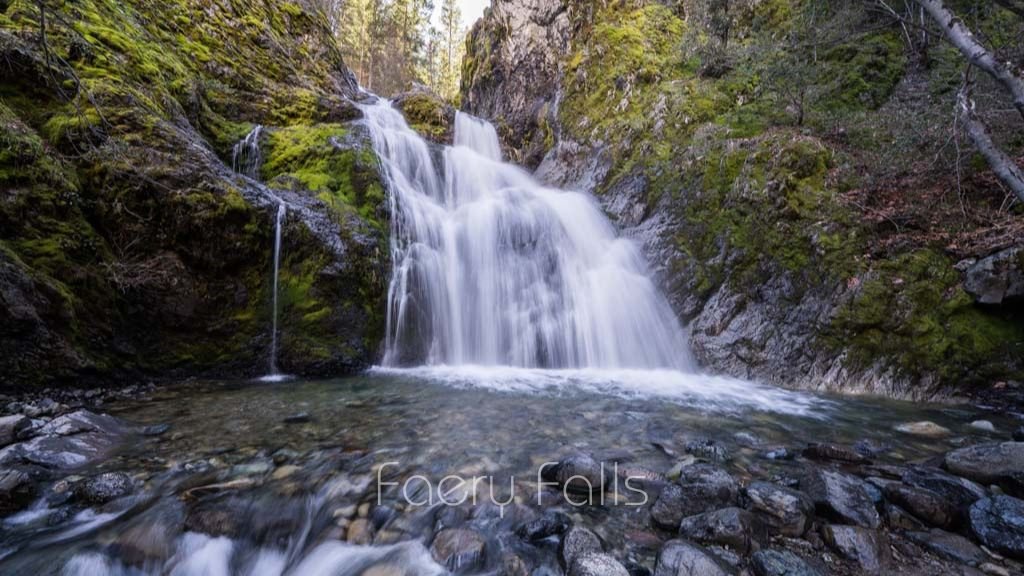
Embark on a scenic hike through Ney Springs Canyon, where history melds with the beauty of nature. The 0.7-mile trek passes by the remains of the Ney Springs Resort, celebrated for its silica springs, with Ney Springs Creek as your companion on this old dirt path.
Faery Falls, plunging about 50 feet down the canyon wall, is the hike’s highlight. The trail to the falls might be unmarked and slightly hidden, but the sound of water will guide you. Depending on the season, the waterfall’s appearance can shift from a serene trickle to a forceful flow—my visit was in September.
Adherence to the creek path is advisable to avoid missing the falls, possibly aided by an offline map for guidance. Be prepared for a potentially longer hike, especially if road conditions suggest parking further back to avoid vehicle damage.
Codfish Creek Falls
For a rewarding day trip from Sacramento, the hike to Codfish Creek Falls along the North Fork of the American River is a perfect choice. The trailhead, accessible off Interstate 80 near Weimar via a dirt road, might challenge some vehicles, but the destination is worth the trek. An SUV or 4WD is preferable, though passenger cars have managed it with care, particularly in dry conditions.
The 1.4-mile trail meanders beside the American River, leading to the 68-foot tall Codfish Creek Falls, which features a double cascade. Close encounters with the falls are possible.
A bridge crossing the river near the falls is a popular spot for swimming and cliff jumping, often featuring a rope swing.
The best times to visit include spring for peak water flow, summer for swimming opportunities, and autumn for its colorful foliage. The trail is most enjoyable when dry, as recent rains can make the dirt road more challenging.
Cataract Falls
Following the winter rains, Cataract Creek, originating from Mount Tamalpais’s western slopes and heading towards Stinson Beach, becomes alive with a succession of small cascades through a verdant canyon. The trek from Stinson Beach to Cataract Falls spans approximately 2.8 miles round-trip and is considered moderately difficult due to its incline, as noted by AllTrails. To access the Mount Tamalpais Watershed, the Marin Water District mandates the advance purchase of a parking pass.
Rainbow Falls
Located a short distance from Devils Postpile, the San Joaquin River dramatically plunges 101 feet at Rainbow Falls, creating a spectrum of colors in the mist. An accessible 1.5-mile stroll from the Reds Meadow region leads to the falls, where the sound and spray of the water make for a perfect picnic setting. The optimal time for photography is around noon when the sunlight best illuminates the rainbow hues that give the falls their name.
The Devils Postpile and Rainbow Falls, along with the Reds Meadow area, are situated 10 miles beyond the Mammoth Mountain Ski Area’s Main Lodge on State Highway 203. During the peak summer period, visitors are required to use a mandatory shuttle service from Mammoth Mountain’s Adventure Center or The Village at Mammoth. The area is inaccessible during the winter months.
Also Read: Stoddard Canyon Falls
Hatchet Creek Falls
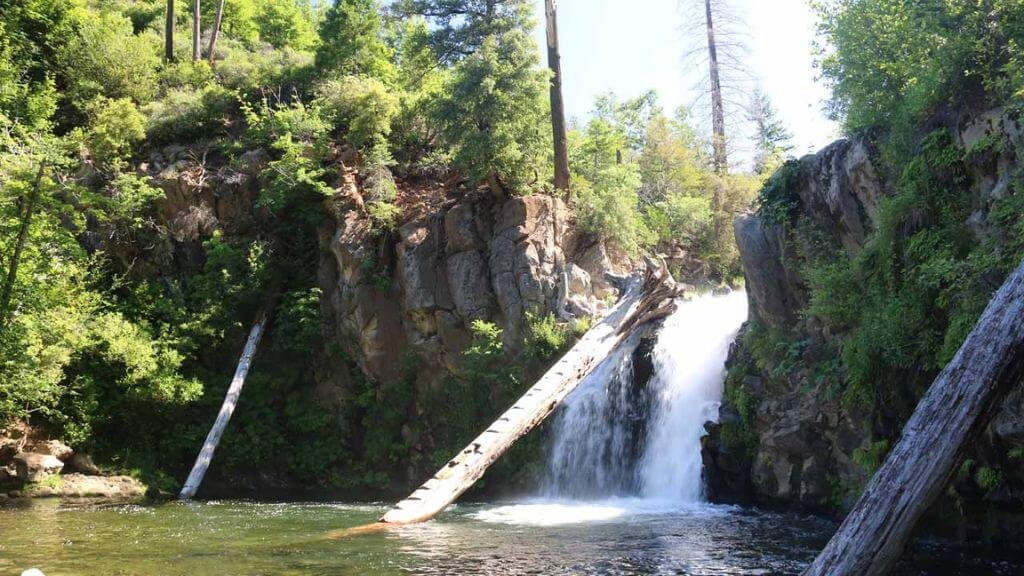
Hatchet Falls, also known as Lions Slide Falls to some, is a beloved spot in Montgomery Creek, known for its appealing swimming hole. The creek descends to form Lion Slide Falls and a spacious pool below, making it a favored destination among Northern California’s swimming spots. This popularity is partly attributed to a large fallen tree across the falls, serving as a natural ladder for swimmers to climb and dive into the pool below.
Hatchet Creek also features a shallower area suitable for children, created by a dam, and the falls and creek are conveniently reached via a brief trail. It’s an ideal locale for a leisurely summer day. The cliffs flanking the falls are a hit with thrill-seekers for cliff diving, adding to the site’s allure.
Alamere Falls
Shifting focus from the mountainous waterfalls in Northern California, let’s explore a unique seaside marvel. While many are familiar with McWay Falls on the Big Sur coast, Alamere Falls at Point Reyes National Seashore represents another stunning example of California’s tidefalls, where water cascades 40 feet directly onto the beach below. Its beauty has been increasingly recognized, partly due to social media exposure. Despite the allure of a shorter path to the falls, this route is perilous and has led to numerous injuries, thus it is strongly discouraged by park authorities.
Embark on a captivating 13.8-mile hike that weaves through forests and along lakes, offering breathtaking views of the ocean, to reach this rare tidal waterfall. Start your adventure early to secure parking and consult tide charts to avoid being stranded by high tides. For a more relaxed experience, consider camping at Wildcat Campground to break up the hike, keeping in mind reservations are highly competitive and fill up quickly.
Hedge Creek Falls
Located just south of Mount Shasta, Hedge Creek Falls is among the most accessible waterfalls in Northern California. The trail to the falls is less than a mile round trip and mostly flat, leading to a charming waterfall that allows visitors to walk behind its cascade. This feature provides a unique perspective, offering a chance to experience the waterfall from a secluded vantage point. While the flow diminishes in the fall, Hedge Creek Falls remains a worthwhile visit throughout the rest of the year for those exploring the Mount Shasta area.
The Horsetail Falls Firefall
Yosemite Valley hosts the modest Horsetail Fall along El Capitan’s eastern edge, which might not catch your eye during the dry summer months. However, in winter, particularly from mid-to-late February, this unassuming waterfall transforms into an extraordinary sight. The setting sun illuminates the fall with an orange glow, creating an illusion of fire cascading down the cliff. This natural spectacle draws crowds, and viewing it comes with specific considerations, including a reservation system for accessing Yosemite during this period and parking restrictions.
Preparation is key for those planning to witness this phenomenon. The winter conditions require appropriate gear for snowy and icy paths, and viewers should dress warmly for the journey back to their cars, equipped with a headlamp or flashlight for safety.
Read More: Things to Do in Twin Falls Idaho
Kings Creek Falls
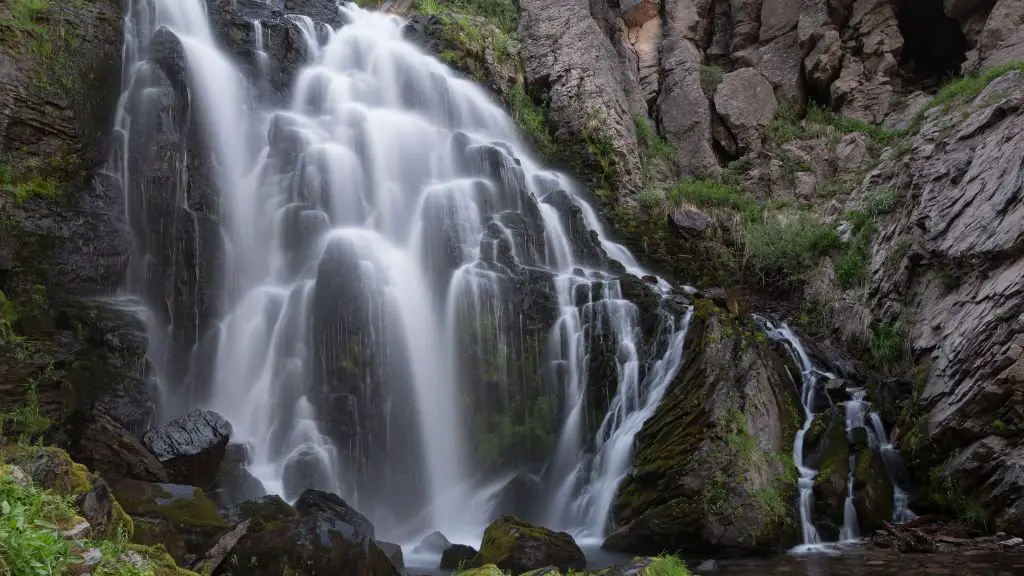
Located within the somewhat overlooked Lassen Volcanic National Park in California, Kings Creek Falls is a captivating 40-foot waterfall. Visitors can reach it via a 2.5-mile round-trip hike, with options for both out-and-back and loop routes. The path to the falls descends, making the return trip an uphill climb of 500 feet in elevation from the falls back to the trailhead. Along the journey, the trail meanders beside the creek, offering views of several smaller cascades.
The optimal period to visit Kings Creek Falls is between mid-June and October when the access road to the trailhead is clear of snow. Early in this window, the waterfall’s flow is more vigorous, although it maintains a consistent flow throughout the year.
Codfish Creek Falls
For those seeking a scenic waterfall adventure within a day’s reach of Sacramento, Codfish Creek Falls offers an appealing option. The hike to this waterfall is accessible via a dirt road off Interstate 80 near Weimar. While the road may be steep and rough in places, the destination justifies the journey. It’s advisable to use an SUV or 4WD vehicle, although careful navigation in a standard car is possible under dry conditions.
The trail meanders along the North Fork of the American River through a canyon for 1.4 miles, culminating at the 68-foot-high Codfish Creek Falls, which features a two-tiered cascade. A bridge spanning the river near the falls serves as a popular spot for swimming and cliff jumping, often complemented by a rope swing.
Root Creek Falls
Root Creek Falls, situated in Castle Crags State Park below the imposing Castle Dome, offers a spectacular, multi-tiered waterfall experience. Although the hike to Castle Dome is highly acclaimed, the trails leading to Root Creek and Root Creek Falls present their own unique allure. Visitors have multiple trail options to reach Root Creek, influenced by time availability, willingness to pay a $10 entrance fee, and interest in seeing Root Creek Falls.
A network of trails leads to a viewpoint of Root Creek Falls, offering varying paths to the creek or the viewpoint itself. From this vista, one can gaze upward at the falls set against the dramatic backdrop of the crags and the sky. The view provides a stunning, vertical perspective up the canyon, showcasing the falls’ majestic beauty.
Lundy Canyon Falls
Lundy Falls, nestled in the stunning Lundy Canyon near Lee Vining in the Eastern Sierra Nevadas, offers an enchanting hiking experience. The round-trip journey to the falls covers approximately 4.6 miles and features a moderate elevation gain of 600 feet. Hikers will encounter some rocky paths and a few steep areas, though these are generally manageable.
The falls themselves are part of a series of cascades set amidst dense forests filled with pine and aspen trees, which become particularly beautiful during the autumn when the leaves change color and in early summer when wildflowers are in bloom. Depending on how one defines a waterfall, there are about four to five cascades to admire.
Conclusion
The waterfalls in Northern California are a testament to the region’s incredible natural diversity, offering everything from serene cascades to thunderous torrents. By planning your visit thoughtfully, bringing essential items, and adhering to conservation principles, you can ensure that these majestic sites remain unspoiled for years to come. So, lace up your hiking boots, pack your essentials, and set out to explore the awe-inspiring beauty of Northern California’s waterfalls. Just remember to tread lightly, respect the natural environment, and enjoy the splendor of nature responsibly.


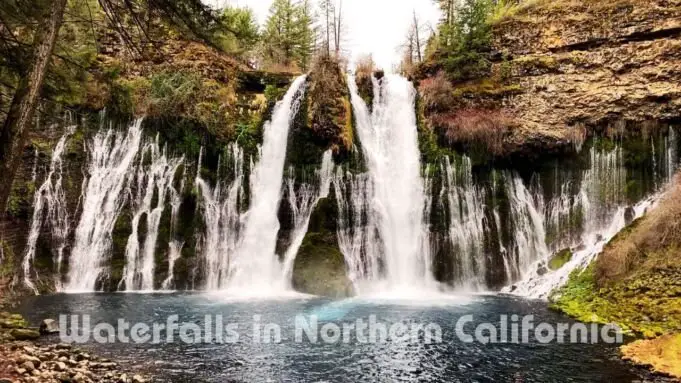













[…] indicated by its evocative name, the Avenue of the Giants is a 31-mile scenic route in Northern California, lined with towering coastal redwoods. Originally part of U.S. Route 101, the roadway was […]
Comments are closed.